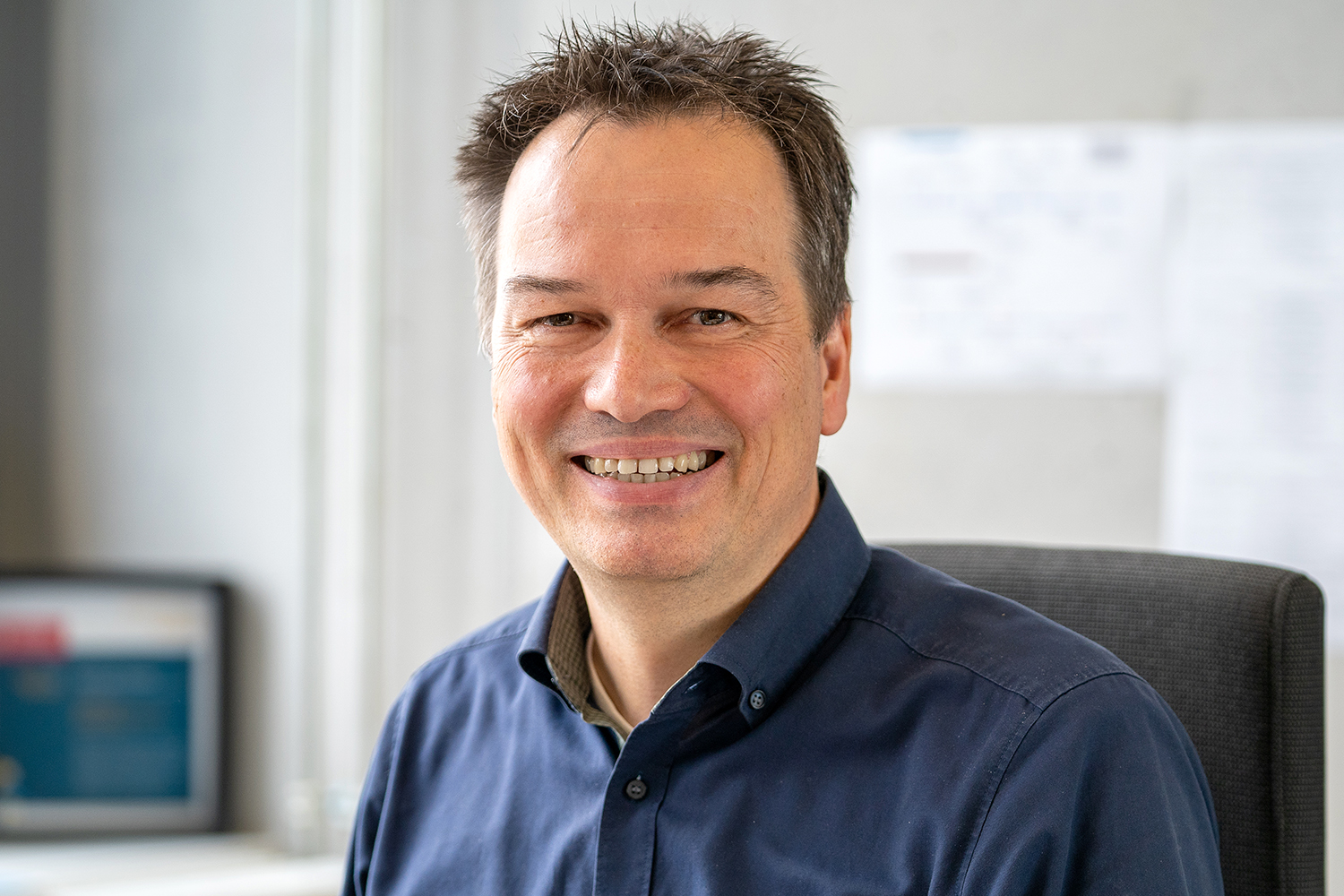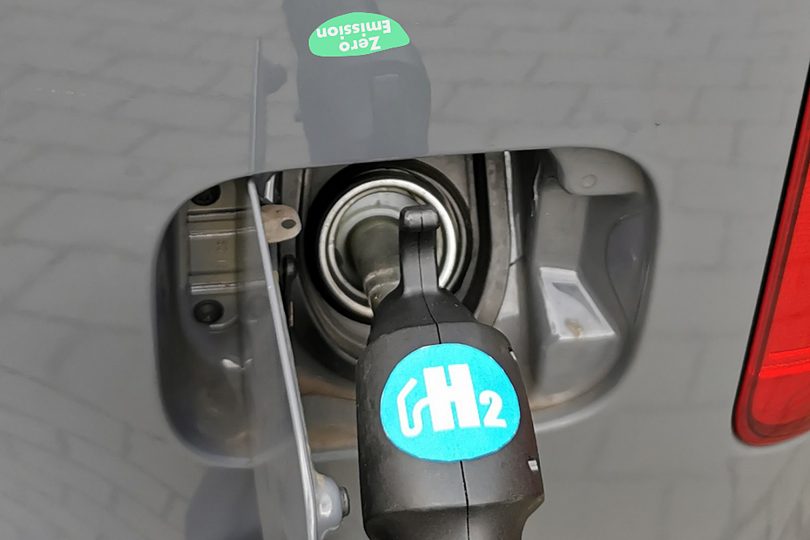“There is no silver bullet that will save the climate” Prof. Jens Friedrichs on research into sustainable aviation in the SE2A cluster
The Cluster of Excellence “Sustainable and Energy Efficient Aviation Systems – SE2A” aims to lay the foundations for a transformation in the air transport system to significantly reduce emissions. We spoke with Professor Jens Friedrichs, cluster spokesperson and head of the Institute of Jet Propulsion and Turbomachinery at TU Braunschweig: What solutions are emerging and how is the cluster being received internationally?

Prof. Jens Friedrichs. Photo credit: Ahmed Nassef/TU Braunschweig
What are currently the biggest challenges the cluster is facing?
Global air traffic has now reached pre-COVID levels. David Calhoun, CEO of the American aircraft manufacturer BOEING, assumed in his strategic plans that air traffic would start to recover in 2027. So we have reached the 2019 level four years earlier. I think that makes it clear how urgent it is to move aviation in the direction of sustainability. My observation is: obviously, consumer awareness does not regulate demand. There is certainly a demand for more sustainability, but too few offers.
The biggest challenge at the moment is that time is extremely short. If we want to fly emission-free from 2050 (according to a voluntary commitment by the International Air Transport Association, IATA), we only have 25 years left. The new technologies must be ready in the next five, ten years at the most, so that they have a chance to enter the market.
In the cluster, we have moved from the phase of broad basic research on the various fuel candidates to the next phase of down-selection: We are now continuing to research Sustainable Aviation Fuels (SAF), hydrogen drives and battery-electric flying, as well as, of course, the question of what the optimal aircraft and traffic management must look like for this.
You have your finger on the pulse of the times with the cluster. How are you thinking about the cluster topic, also with a view to continuing it after 2025?
We will do even more assessments with regard to climate impacts. Five years ago, the focus was still very much on the carbon food print. Today, the realisation has gained ground that it is not only about CO2 emissions, but about climate effects as a whole. For the goal of climate neutrality, we have to keep much more in mind than pure CO2 emissions. Water emissions from hydrogen drives can also be harmful. What effects, for example, does the water released by aircraft have in a climatological sense? To investigate this, we are currently setting up a project group with young scientists.
We will also be looking more intensively at the transition of the aviation system. What will the aviation system look like in 25 years? It is about the integrability of new solutions into existing fleets, a gradual replacement of current technologies with more sustainable ones – a rollout during ongoing operations, so to speak. For airlines, airports and the entire infrastructure, replacing a conventional aircraft with a hydrogen aircraft is a huge revolution. The effects are gigantic. We need to focus more clearly on the fundamentals for this seamless transition.
The pressure on the aviation industry to introduce sustainable technologies is increasing. Are you also experiencing this?
Aircraft and engine manufacturers are approaching us. With them, you notice that there is a lot of pressure: a decision has to be made about which technologies will go into flight testing in ten years. Of course, we are also observing this in discussions with industrial contacts.
There is also a need for advice from the political side, especially from committee representatives. We just had several workshops with the “Committee for Education, Research and Technology Assessment (ABFTA)” in the Bundestag. The question here was which political framework conditions must be created for regulatory and incentive systems in the area of climate neutrality. One thing is clear: there is no “silver bullet” that will save the climate—there are different technologies that are best suited for different segments in each case.
What will change for passengers?
The absolute super-cheap flights – for example from a domestic German airport to a Mediterranean tourist location – will no longer exist. Those were cabin filling prices. I think this is a sensible development. How much prices will change depends on how much the willingness to use will switch towards sustainability.
Generally speaking, there will be no radical changes for passengers. But what will play a role, for example, is whether there will still be long-haul flights (more than 8,000 km), which are considered particularly polluting. This means that passengers will have to change planes more often.
Is it foreseeable which solutions or scenarios, especially for engines, will be coming into consideration in the next few years?
Clearly, Sustainable Aviation Fuels (SAF) will be the big technology, at least as a “bridge technology” until we have new technologies ready. On the long haul, SAF will remain the solution in the long run; here we have to clarify the production route, i.e. which starting raw materials and production routes are the best in a sustainable sense. SAF is a substitute for fossil aircraft fuel and is produced from biological raw materials (sugar, used fats, renewable biomass, algae) or produced synthetically, the latter being the most sustainable option with additional CO2 from the atmosphere – but unfortunately also the most expensive.
The second energy carrier is hydrogen—either in direct combustion in the gas turbine or in the form of a fuel cell. In the long term, these two variants, together with the SAF, will cover at least 85 percent of the transport volume. Electric aviation (battery-electric) will not cover more than 10 to 15 per cent in the medium to long term, even with very optimistic assumptions. The problem with battery operation is that you have to allow for short distances or low loads or even both together.
In the cluster, you look at the entire air traffic system, assuming a radical restructuring of the system to make it fit for the future. Is it already apparent where which measures should be implemented first?
For example, different routing. This involves adapting the routes so that the climatological conditions are more favourable and the impact on the climate is correspondingly lower—with the same emissions. This means flying around sensitive atmospheric areas and reducing the risk of cloud formation. Technically, this can be implemented immediately. However, lower flying, shorter routes and lower speeds come at the expense of predictable travel times and travel comfort. This requires more flexibility from passengers. The implementation of climatologically optimal route selection is limited by the complexity of connections and clock rates at airports.
Another point would be to increase the production of Sustainable Aviation Fuels (SAF) globally. Today, SAF is still more expensive than paraffin. Regulation is needed here so that there are incentives for clean production.
Your work has a strong international focus. For example, you are organising the Summer School for Advanced Sustainable Aviation Technologies in 2023, where SE2A’s expertise is also called upon. What is on the programme?
We have invited students from all over the world to get to know the SE2A results and to learn about the latest knowledge in the field of sustainable flying from 25 experts, including AIRBUS. In a second step, the students will present their travel and sustainability scenario of future aviation in workshops. We have participants from India, England and Dubai, among others—it will certainly be a nice event!
What is the general international perception of the cluster?
We see this in the intensive cooperation with our partners, especially in the current discussions with colleagues in Toulouse (France), but also Delft (Netherlands), Cambridge and London (England). In Europe, we are well established; the perception of the Cluster of Excellence is very prominent. Overseas, we have good contacts in the community and a very strong exchange. It is remarkable that not everywhere the recognition of the necessity and the radicalness in the change of aviation is as clear as we see it in Germany and Europe.
Are there difficulties in communicating your ideas and concepts to companies and politicians?
In the SE2A preparatory project “Energiewende der Luftfahrt”, some people asked us why we would need an energy turnaround in aviation. That was six years ago. No one asks such questions any more. At the beginning of SE2A, some observers considered us too radical, in the sense that we wanted too much. But that is no longer an issue. Our ears are always open to companies and politicians.
Are there any outstanding things to report from the perspective of equality?
We have two new female professors in aerospace engineering: Prof. Simona Silvestri (Institute of Space Systems) and Prof. Frederica Ferraro (Institute of Jet Propulsion and Turbomachinery). At this level, this is a real leap forward with two more highly committed female experts. The female student club changING is also going great. We are very good at recruiting female students and even have a higher quota of women than mechanical engineering.
What highlights in the Cluster of Excellence do you look back on?
We are proud that we have received funding for the EAGLE. The joint large-scale equipment of Leibniz Universität Hannover and TU Braunschweig with a volume of three million euros is currently being set up. EAGLE is a very important milestone and enables us to test the models and theoretical findings in practice.
Another example that should be mentioned is the white paper “Accelerating the path towards carbon-free aviation”, which was produced together with European partners and SE2A. This is a valuable product because it speaks purely from a scientific perspective and does not follow an industry roadmap. While this paper is about aircraft and propulsion systems, the upcoming white paper will focus on air routes and air traffic management.
Which milestones still lie ahead?
The biggest project for the next 13 months will be the follow-up application for the Cluster of Excellence. We have to submit the application by 24 August 2024. At the same time, we are building up the junior research groups.
This year, we will gather ideas for the follow-up application at our annual cluster conference. Of course, there will also be a cluster conference at the end where the results will be presented. In 2025, Braunschweig will also host the Nationale Luftfahrtkonferenz (NLK), which we are organising together with DLR and the research airport.


